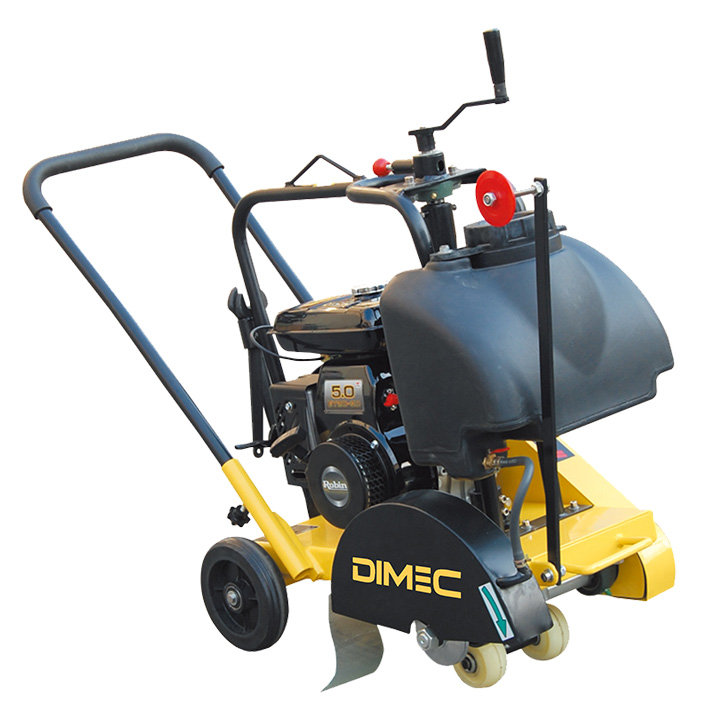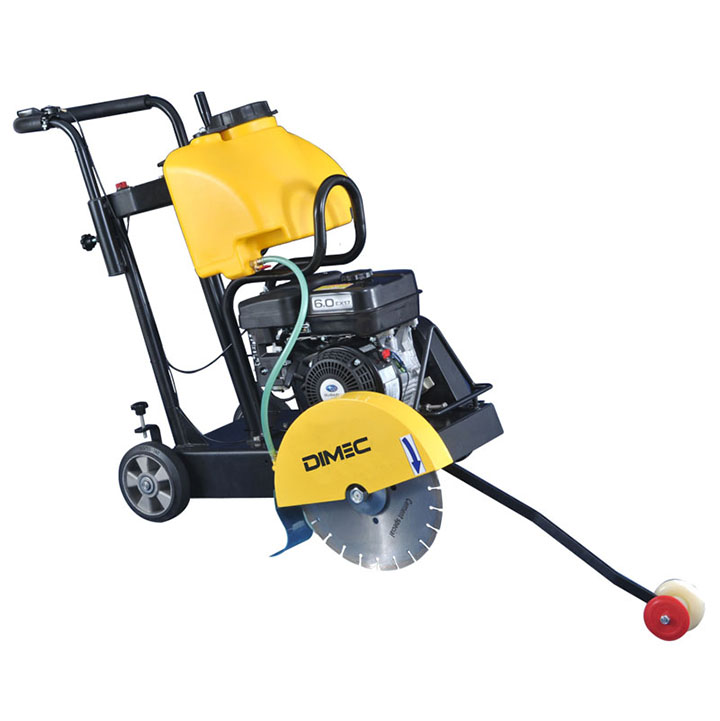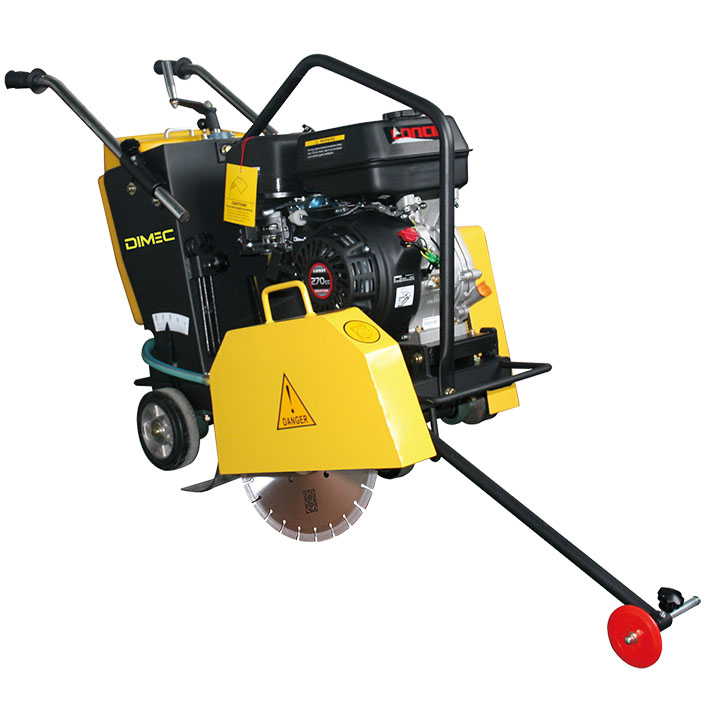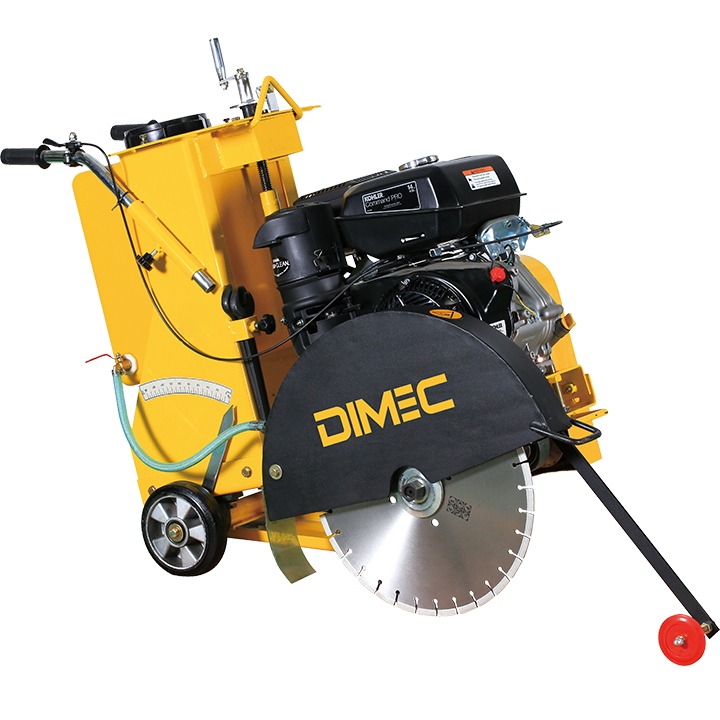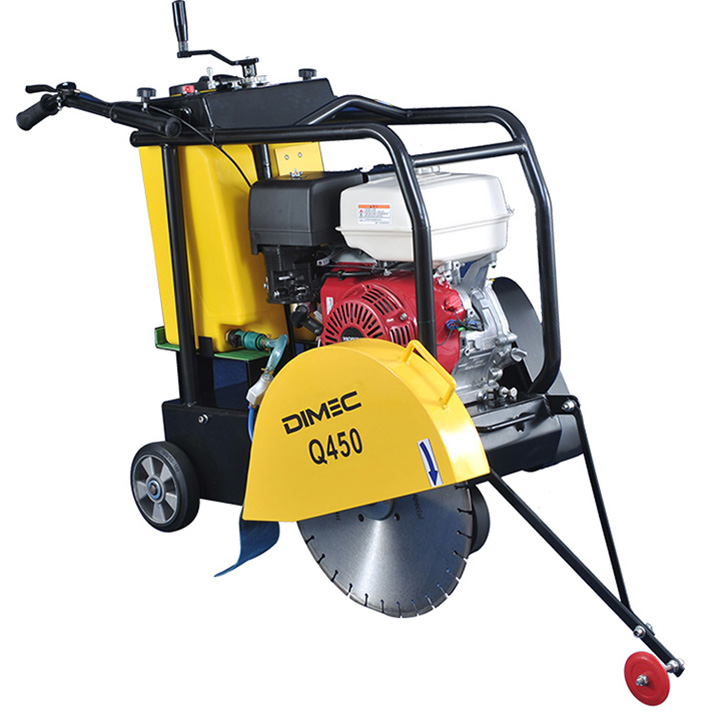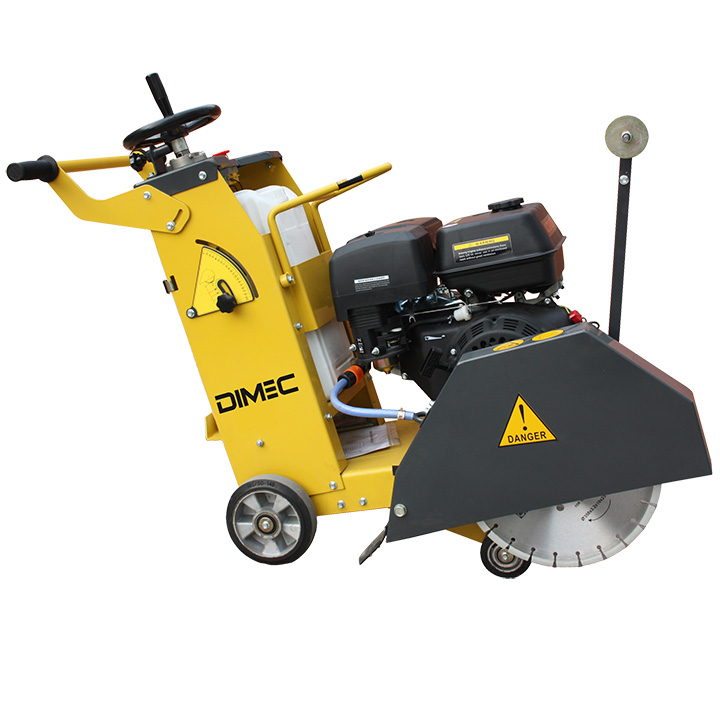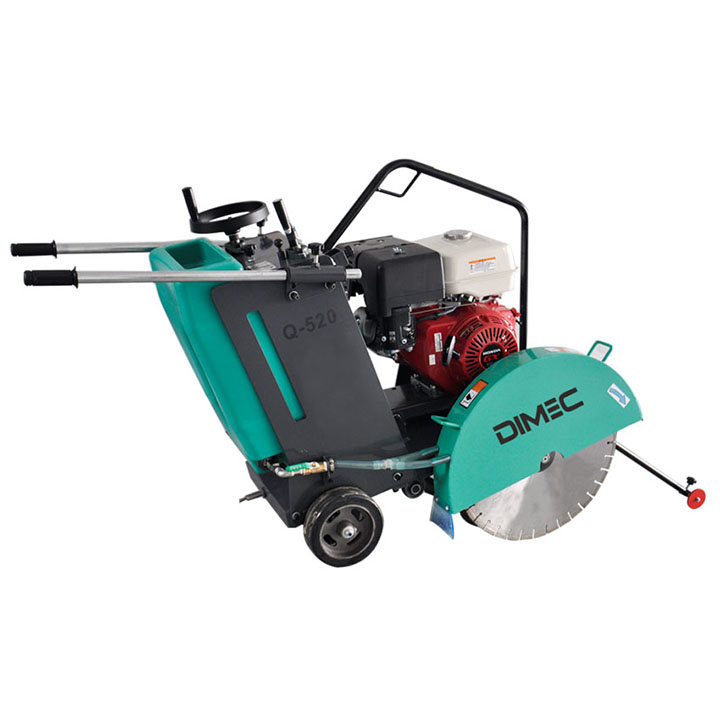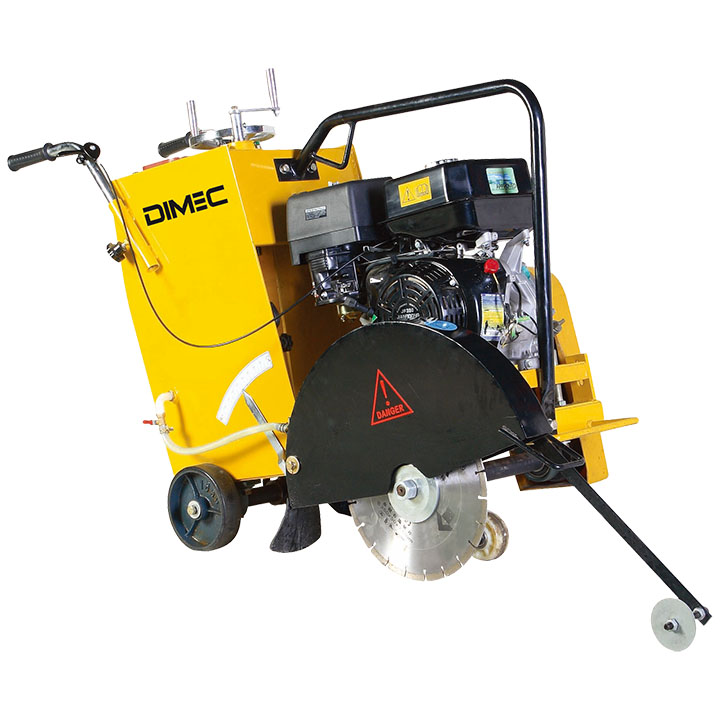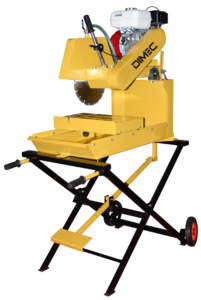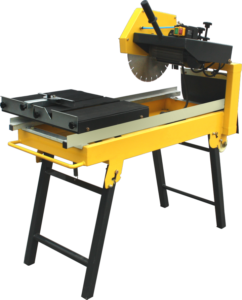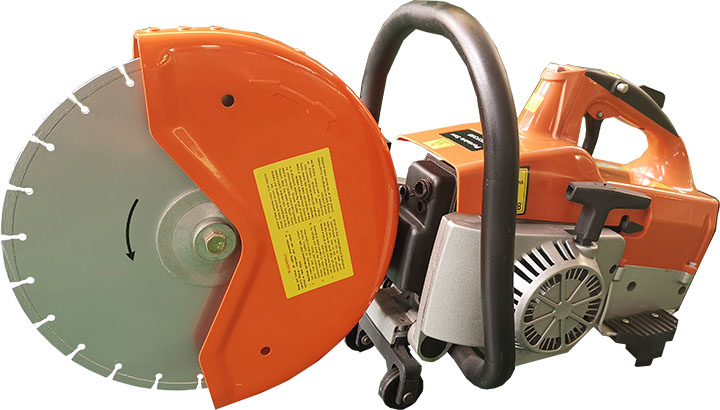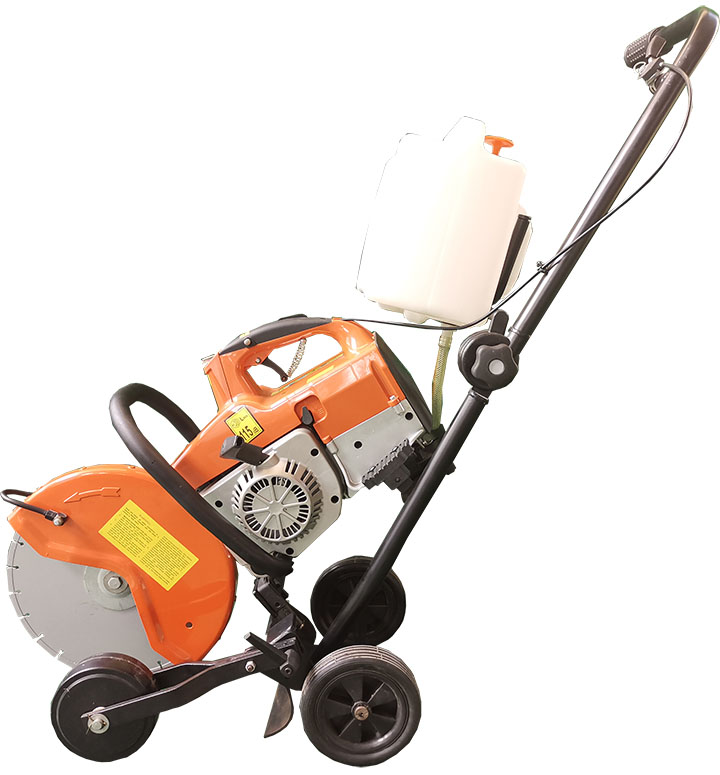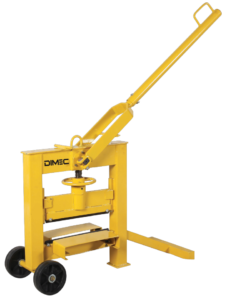Floor Saw
When you are looking for a concrete floor saw, we can assist you in selecting the most suitable concrete cutter for your business.
Description
Concrete saws, also known as consaws or road saws, are powerful tools specifically designed for cutting hard materials such as concrete, asphalt, brick, and masonry. Whether you’re working on a construction site, a demolition project, or a home renovation, concrete saws are essential for making precise and efficient cuts.
Walk behind floor saw is ideal for any jobs that require power and portability. This compact, lightweight saw has been engineered for maneuverability and reliability. Also, perfect weight distribution means excellent stability while sawing. It is widely used in service work, road maintenance, relief effort etc.
PME floor saws are suitable for cutting expansion joints in asphalt and concrete concrete surfaces with a diamond blade.
They can also be used to cut asphalt for road maintenance.
Typical applications include floors and parking and cutting of road surface prior to excavation works.
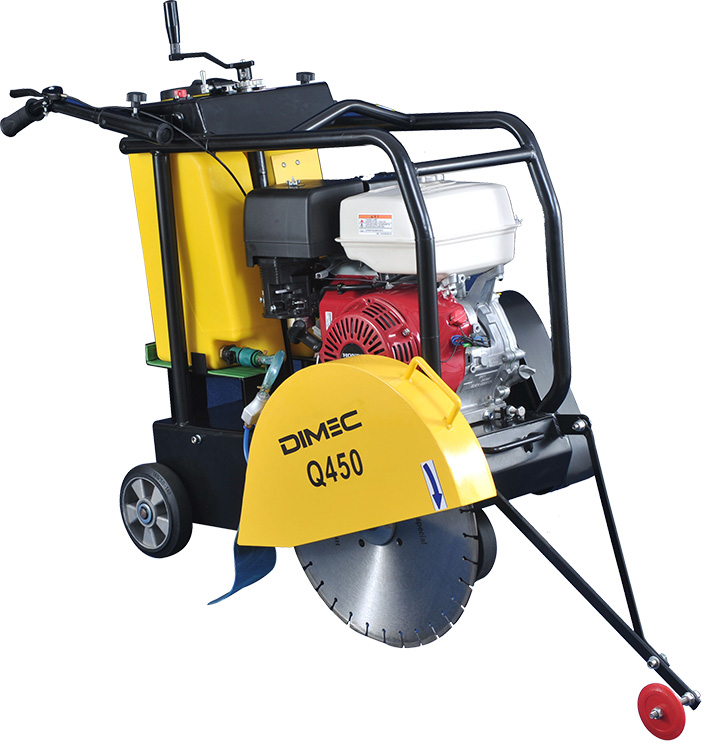
Features
Ease operation
Humanized design handle with easy and comfortable operation. Designed for left or right mounting of blade guard provides easy access for blade change and inspection.
Adjustable cutting depth
The crank can adjust cutting depth easily. Elevating device is manual locked, which ensures the same cutting depth.
Guide-bar
The guide-bar with anti curl and anti vibration function, to ensure straight cutting, extend blade and machine usage life.
Water tank
Big capacity detachable water tank provides water to both sides of the blade, reduce blade temperature and restrain dust when cutting.
Product Parameters
| Engine | Honda / Robin / Loncin / Diesel engine |
|---|---|
| Engine type | Air-cooled,single cylinder,4-stroke,petrol engine/diesel engine |
| Max. cutting depth | 12.5 cm |
| Max. cutting length | 42 cm |
| Blade size | 350 mm |
| N.W./G.W. | 115/125 kg |
| Package (L x W x H) | 127x70x100 cm |
| Motor | 2.2KW electric motor |
|---|---|
| Blade speed | 2800 rpm |
| Blade diameter | 300 mm ; 350 mm |
| Max. cutting depth | 11 cm |
| Max. cutting length | 70 cm |
| N.W./G.W. | 76/86 kg |
| Package (L x W x H) | 113x56x55 cm |
| Engine type | Single-cylinder , 2-stroke , air-cooled,petrol engine |
|---|---|
| Engine power | 3.0kw / 4HP |
| Displacement | 65 cc |
| Engine speed | 8500 rpm |
| Mixed fuel | 50:1 (50 gasoline:1 two stroke engine oil) |
| Fuel tank capacity | 1.5 L |
| Max. cutting depth | 11.5 cm |
| Max circular velocity | 4850 r/min |
| Blade | 300mm ; 350mm |
| N.W./G.W. | 12.5/15 kg |
| Package (L x W x H) | 71x36x48 cm |
| Model | PME-BS35 | PME-BS40 |
|---|---|---|
| Blade length [cm] | 34 | 39 |
| Max. cutting height [cm] | 14 | 14 |
| Operate Manual | Manual | Manual |
| N.W./G.W. [kg] | 41/45 | 48/52 |
| Package (L x W x H) [cm] | 72x32x62 | 90x32x62 |
Parameters comparison
| Model | PME-Q300 | PME-Q350 | PME-Q400 | PME-Q420 | PME-Q450 | PME-Q480 | PME-Q520 | PME-Q550 |
|---|---|---|---|---|---|---|---|---|
| Max. cutting depth [cm] | 10 | 11 | 13 | 14 | 16 | 18.5 | 20 | 20 |
| Depth adjustment | Handle rotation | Handle rotation | Handle rotation | Handle rotation | Handle rotation | Handle rotation | Handle rotation | Handle rotation |
| Forward mode | Manual push | Manual push | Manual push | Manual push | Manual push | Manual push | Manual push | Semi-self propelled |
| Water tank capacity [L] | 12 | 10 | 25 | 35 | 30 | 30 | 32 | 40 |
| Blade size [mm] | 300;350 | 300;350 | 300;350;400 | 300;350;400;450 | 400;450 | 400;450;500 | 400;450;500 | 400;450;500 |
| N.W./G.W [kg] | 70/75 | 70/75 | 90/100 | 120/130 | 115/125 | 105/115 | 140/150 | 170/180 |
| Package (L x W x H) [cm] | 85x50x79 | 83x55x95 | 99x55x87 | 108x58x105 | 91x58x105 | 93x56x106 | 110x57x112 | 115x57x105 |
Application
Concrete Saw Advantages
Powerful Motor
Equipped with a high-torque motor that provides ample power for cutting through various materials, including concrete, asphalt, and stone.
Precision Cutting
Designed for accurate and straight cuts, ensuring clean and precise results for various applications, such as expansion joint cutting and demolition work.
Depth Control
Features adjustable depth control mechanisms, allowing for precise cutting depths and minimizing over-cutting or under-cutting.
Safety Features
Incorporates safety features like blade guards, emergency stop buttons, and water supply systems to reduce dust and debris during operation.
Types of Concrete Saws
Handheld Concrete Saws
Handheld concrete saws are portable and versatile. They are ideal for small to medium-sized projects where maneuverability is key. These saws are perfect for cutting through walls, floors, and other confined spaces where larger saws can’t reach. Benefits include ease of use, portability, and relatively lower cost.
Walk-Behind Concrete Saws
Walk-behind concrete saws are larger and more powerful than handheld models. They are typically used for cutting through roads, driveways, and large slabs of concrete. These saws offer greater stability and deeper cutting capabilities, making them ideal for heavy-duty applications. The main advantage is their ability to handle large-scale projects efficiently.
Table Saws
Table saws for concrete are specialized machines designed for precision cutting. They are commonly used in fabrication shops where accuracy is paramount. Features include adjustable blades, water cooling systems, and sturdy worktables. These saws are essential for cutting tiles, pavers, and other decorative concrete elements.
Wire Saws
Wire saws use a wire or cable embedded with diamond segments to cut through concrete. These saws are particularly useful for making deep cuts and for demolishing large structures. They are often used in underwater cutting or in situations where traditional saws are impractical. The benefits include the ability to cut complex shapes and reduced vibration during cutting.
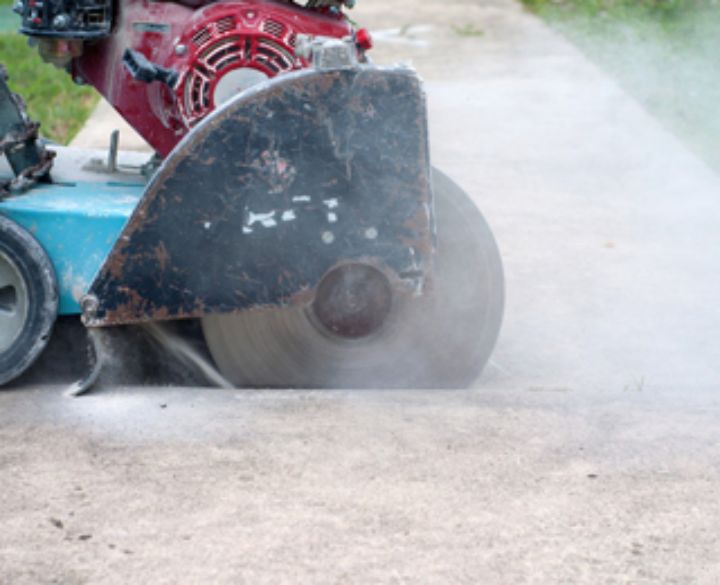
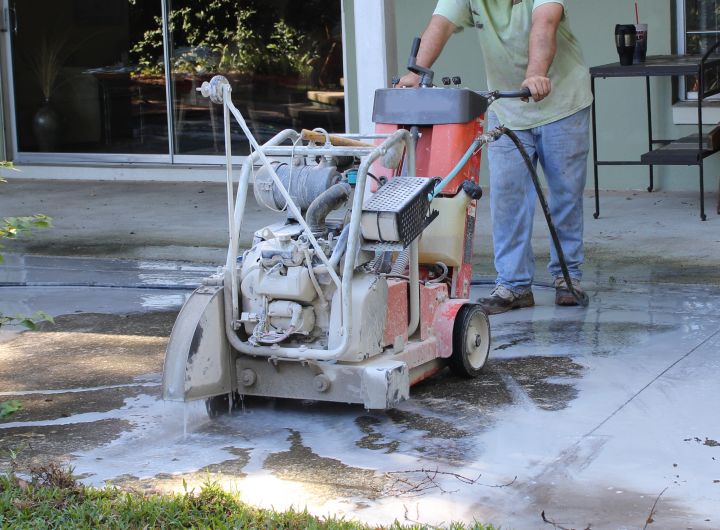
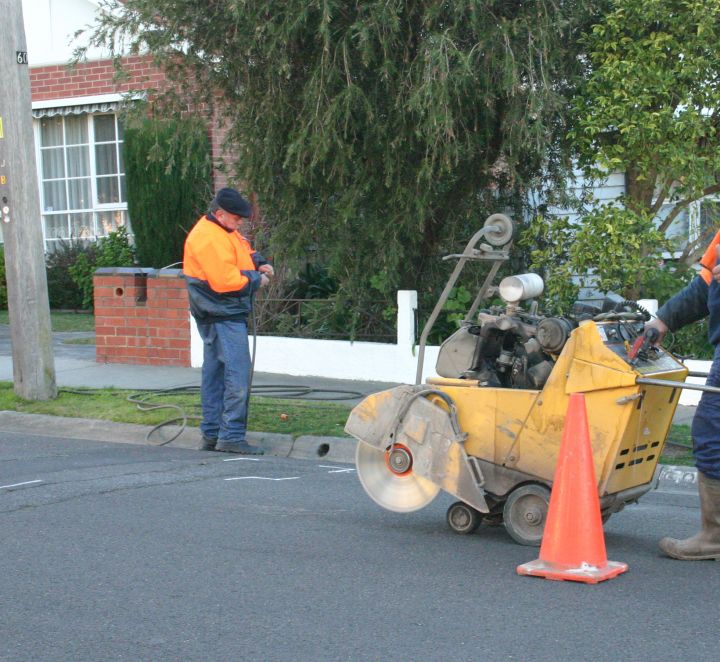
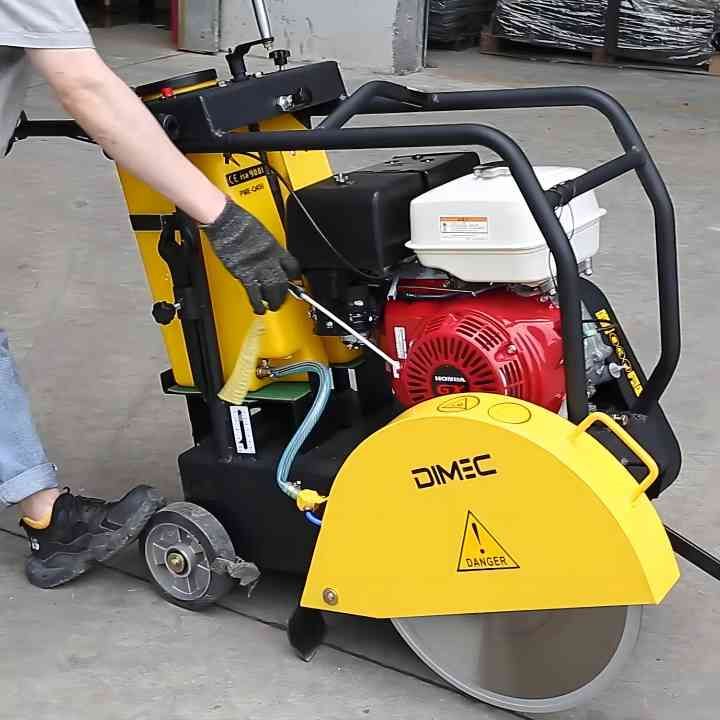
Key Features to Look for in Concrete Saws
Blade Types
Choosing the right blade is crucial for efficient cutting. Diamond blades are the most popular for cutting concrete due to their durability and cutting power. Abrasive blades are also used, but they wear out faster and are less efficient.
Power Source
Concrete saws can be powered by gas, electricity, or hydraulics. Gas-powered saws are the most common and offer high mobility, but they emit fumes. Electric saws are quieter and produce no emissions, making them suitable for indoor use. Hydraulic saws are powerful and versatile but require a hydraulic power source.
Cutting Depth
The cutting depth of a saw determines how thick a material it can cut. Consider the maximum cutting depth required for your projects to choose the appropriate saw. Walk-behind saws generally offer the deepest cuts, while handheld saws are limited by their size.
Durability and Build Quality
A robust build ensures the saw can withstand the rigors of heavy-duty use. Look for models with reinforced frames, high-quality materials, and reliable components. Durability is especially important for professional contractors who use their tools frequently.
Safety Features
Safety should always be a priority. Key safety features to look for include blade guards, emergency stop functions, and anti-vibration systems. Proper safety features not only protect the user but also prolong the life of the saw.
Choosing the Right Concrete Saw
Assessing Project Needs
Evaluate the specific requirements of your project. Consider the type of material, the thickness of the cuts, and the working environment. For example, a handheld saw might be perfect for small indoor projects, while a walk-behind saw is better suited for large outdoor jobs.
Budget Considerations
Concrete saws range in price from a few hundred to several thousand dollars. Determine your budget and weigh it against the features you need. Sometimes investing in a higher-end model can save money in the long run due to better performance and durability.
Comparing Brands and Models
Research different brands and models to find the best fit. Read reviews, compare specifications, and consider the reputation of the manufacturer. Popular brands like Husqvarna, Stihl, Makita, and DeWalt are known for their quality and reliability.
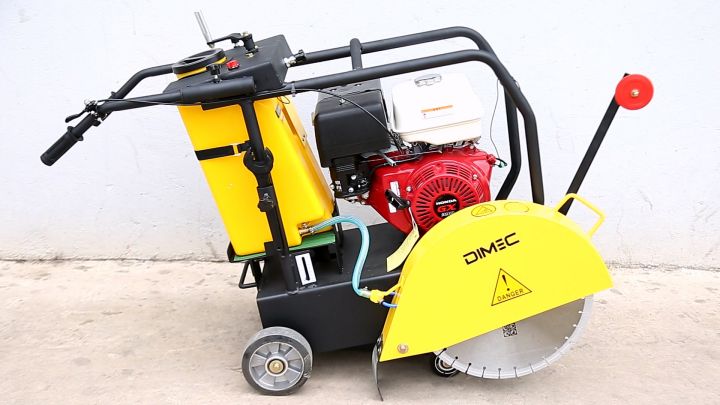
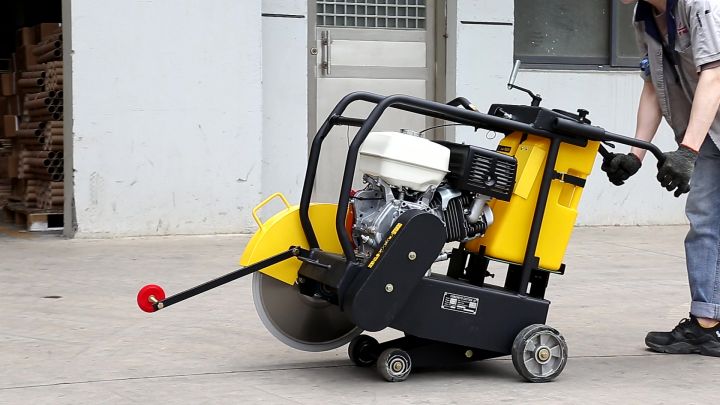
The lifespan of a concrete saw blade depends on the blade type, the material being cut, and the frequency of use. Diamond blades typically last longer than abrasive blades. Regular maintenance and proper usage can extend the blade’s life.
Yes, concrete saws can cut through various materials such as brick, stone, and asphalt. However, it’s important to use the appropriate blade for each material to ensure efficient cutting and prevent damage to the saw.
Diamond blades are considered the best for cutting concrete due to their durability and cutting efficiency. They provide precise cuts and have a longer lifespan compared to other types of blades.
Regular servicing is crucial for maintaining a concrete saw’s performance. It’s recommended to perform basic maintenance, such as cleaning and inspecting the blade, after each use. More comprehensive servicing, including engine or motor checks, should be done periodically as advised by the manufacturer.
Yes, electric concrete saws are available and are a great option for indoor projects or areas where emissions are a concern. They are quieter and produce no fumes, making them suitable for enclosed spaces.
Maintenance
Floor saw Periodic Maintenance Schedule
| | Daily Before Starting | After First 5 Hrs. | After First 50 Hrs. | Every Week or 25 Hrs. | Every month or 100 Hrs. | Every 3 months or 300 Hrs. |
|---|---|---|---|---|---|---|
| Check fule level | √ | |||||
| Check oil level of machine | √ | |||||
| Check fule line and fittings for cracks or leaks | √ | |||||
| Check and tighten engine cylinder screws | √ | √ | ||||
| Check and tighten external hardware | √ | √ | ||||
| Check V-belt | √ | |||||
| Clean engine cooling fins | √ | |||||
| Clean recoil starter | √ | |||||
| Clean engine muffler and exhaust port | √ |
Note: If engine performance is poor,please check,clean and replace air filter elements as needed.
Engine periodic maintenance schedule
| Each use | First month or 20 hours | Every 3 months or 50 hours | Every 6 months or 100 hours | Every year or 300 hours | ||
|---|---|---|---|---|---|---|
| Engine oil | Check level | √ | ||||
| Change | √ | √ | ||||
| Air cleaner | Check | √ | ||||
| Clean | √(1) | |||||
| Replace | √☆ | |||||
| Sediment Cup | √ | |||||
| Spark plug | Check-Clean | √ | ||||
| Replace | √ | |||||
| Spark arrester(optional parts) | Clean | √ | ||||
| Idle speed | Check-Adjust | √(2) | ||||
| Valve clearance | Check-Adjust | √(2) | ||||
| Fuel tank and strainer | Clean | √(2) | ||||
| Combustion chamber | Clean | After every 300 Hrs. (2) | ||||
| Fuel line | Check | Every 2 years (Replace if necessary) (2) | ||||
☆ Replace the paper element type only.
(1)Service more frequently when used in dusty areas.
(2)These items should be serviced by your servicing dealer unless you have the proper tools and are mechanically proficient. Refer to manual for service procedures.
Performed at every indicated month or operating hour interval, whichever comes first.
